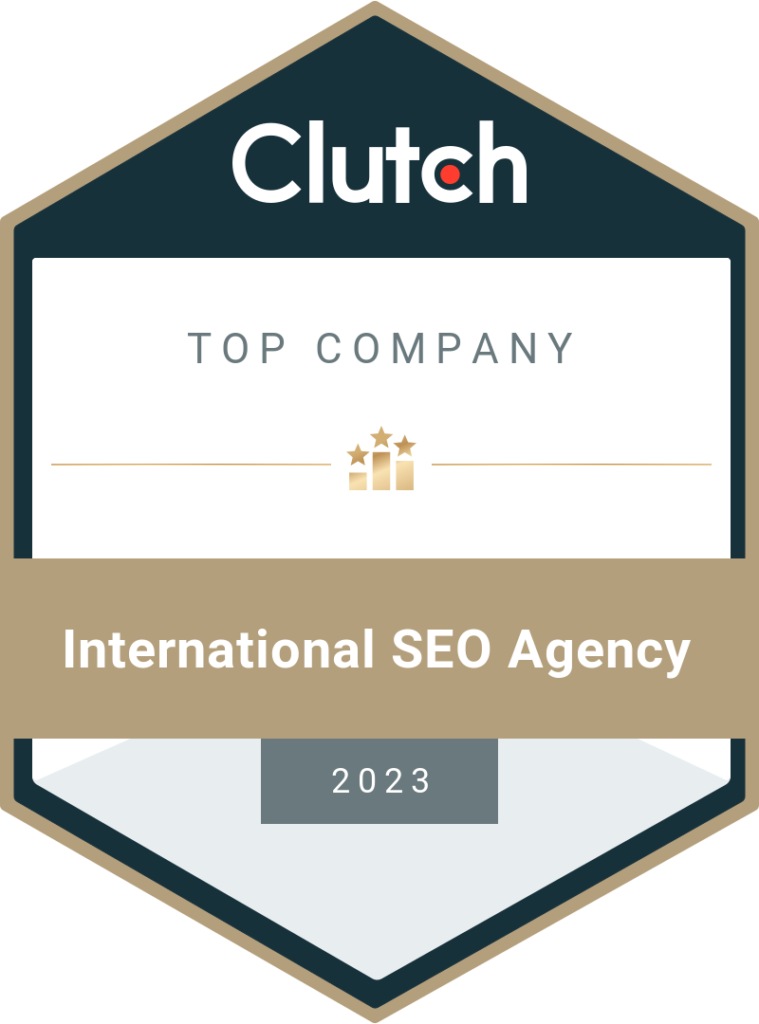Social media marketing for hospitals goes beyond simply posting updates or sharing healthcare tips. It involves leveraging the unique capabilities of platforms like Facebook, Twitter, Instagram, and LinkedIn to foster meaningful connections with patients, nurture a sense of community, and provide valuable healthcare information. By tapping into the vast user base and targeting capabilities of these platforms, hospitals can effectively reach their target audience, deliver personalized messaging, and ultimately improve patient care.
This blog post aims to delve into the world of social media marketing specifically tailored for hospitals. We will explore the benefits it offers, the strategies hospitals can adopt to maximize its impact, and real-life examples of successful campaigns that have redefined the healthcare landscape. Whether you are a healthcare professional, a marketing specialist, or a hospital administrator, this guide will equip you with the necessary insights to navigate the ever-evolving social media landscape and make a significant impact on your organization’s success.
Join us as we uncover the immense potential of social media marketing for hospitals, where we will explore the key strategies, best practices, and success stories that will empower you to harness the power of social media and elevate your healthcare organization to new heights. It’s time to prescribe a winning social media strategy for your hospital and embark on a journey of digital transformation.
Table of Contents
Why Social media marketing for hospitals is important?
Social media marketing for hospitals is important because it helps build brand awareness, facilitates patient engagement, enables targeted reach, educates and empowers patients, aids in crisis communication, supports recruitment efforts, and provides valuable analytics and insights. Embracing social media as part of a hospital’s marketing strategy can lead to improved patient care, strengthened relationships, and overall organizational success in the digital age.
Social media marketing for hospitals has emerged as a vital component of a comprehensive digital marketing strategy. Here are several key reasons why it is important:
Enhanced Brand Awareness: Social media platforms offer hospitals an opportunity to amplify their brand presence and increase visibility among their target audience. By consistently sharing engaging and informative content, hospitals can build brand recognition, establish thought leadership, and differentiate themselves from competitors.
Effective Patient Engagement: Social media allows hospitals to directly engage with their patients and foster a sense of community. By providing valuable healthcare information, addressing patient concerns, and responding to inquiries in a timely manner, hospitals can strengthen patient relationships, improve patient satisfaction, and increase loyalty.
Targeted Reach: Social media platforms provide powerful targeting capabilities that enable hospitals to reach specific demographics, interests, and geographical locations. This allows hospitals to tailor their messaging to specific patient segments, ensuring that their content reaches the right people at the right time.
Patient Education and Empowerment: Social media platforms serve as valuable channels for educating patients about various health conditions, preventive measures, treatment options, and wellness tips. By sharing accurate and reliable information, hospitals can empower patients to make informed decisions about their healthcare.
Crisis Communication and Reputation Management: In times of crises, such as disease outbreaks or natural disasters, social media becomes a crucial communication tool for hospitals. It allows them to quickly disseminate important updates, address concerns, and provide timely information to the public, thereby managing their online reputation and fostering trust.
Recruitment and Talent Acquisition: Social media platforms can be utilized by hospitals to attract and recruit top talent in the healthcare industry. By showcasing a vibrant work culture, sharing employee success stories, and promoting career opportunities, hospitals can position themselves as desirable employers and attract qualified professionals.
Analytics and Insights: Social media platforms provide robust analytics tools that allow hospitals to measure the impact of their marketing efforts. These insights help in evaluating the success of campaigns, identifying areas for improvement, and making data-driven decisions to optimize future strategies.
Type of Social Media Marketing Services for Hospitals
- Organic: Organic social media marketing refers to the practice of engaging with an audience and promoting a hospital’s brand, services, and values through non-paid or non-promotional content.
- Advertising: Paid social media advertising services for hospitals involve the planning, execution, and management of paid campaigns on various social media platforms. These services are designed to help hospitals effectively utilize paid advertising to reach their target audience, increase brand awareness, and achieve specific marketing objectives.
Difference between organic and paid social media marketing for hospitals
Organic social media marketing and paid social media marketing are two distinct approaches that hospitals can utilize to achieve their marketing goals. Here’s a breakdown of the differences between the two:
Organic Social Media Marketing for Hospitals

Definition: Organic social media marketing involves creating and sharing non-promotional content on social media platforms without paying for advertising or boosted reach.
Cost: Organic social media marketing is typically free, as it relies on the hospital’s organic reach and the quality of content to engage with the audience.
Reach: The reach of organic content is limited to the hospital’s existing followers and those who come across the content through shares, hashtags, or search.
Engagement: Organic social media marketing focuses on building genuine relationships and fostering meaningful engagement with the audience through informative, educational, and valuable content.
Longevity: Organic content has a longer lifespan, remaining visible on social media platforms even after its initial posting, allowing for ongoing engagement and potential discoverability.
Targeting: While organic social media marketing can utilize hashtags and targeted content, it lacks the precise targeting capabilities that paid advertising provides.
Control: Hospitals have complete control over the content they produce and share organically, allowing them to shape their brand image and convey their messaging authentically. Must check our Facebook post ideas.
Paid Social Media Marketing for Hospitals

- Definition: Paid social media marketing involves allocating a budget to promote and amplify content on social media platforms through targeted advertising and sponsored posts.
- Cost: Paid social media marketing requires a financial investment as hospitals pay to reach a wider audience and increase visibility.
- Reach: Paid advertising enables hospitals to extend their reach beyond their organic following, targeting specific demographics, interests, geographic locations, or behaviors.
- Engagement: Paid social media marketing can drive immediate engagement through boosted visibility, increasing the likelihood of clicks, likes, shares, and conversions.
- Duration: Paid advertising has a limited duration based on the allocated budget and the specified campaign timeline. Once the budget is depleted, the reach and visibility decline.
- Targeting: Paid social media marketing provides advanced targeting options, allowing hospitals to tailor their messaging to specific segments, ensuring content is delivered to the most relevant audience.
- Control: Hospitals have control over the targeting parameters and ad formats but have limited control over how the social media platform displays the ad.
In summary, organic social media marketing relies on non-promotional content and engages with the audience through genuine interactions, while paid social media marketing involves a financial investment to reach a wider audience with targeted advertising. Both approaches have their unique advantages and serve different purposes in a hospital’s overall social media strategy, with organic marketing focusing on long-term relationship building and paid marketing offering immediate reach and precise targeting capabilities. A combination of both can yield the most comprehensive and effective social media presence for hospitals.
What Activities Should Social Media Marketing Services for Hospitals Must Include?

When it comes to social media marketing services for hospitals, there are various types of strategies and activities that can be employed to achieve specific goals.
Here are some common types of social media marketing services for hospitals:
- Social Media Strategy Development: This service involves the creation of a comprehensive social media strategy tailored to a hospital’s goals, target audience, and brand identity. It includes defining objectives, identifying target platforms, determining content themes, and establishing key performance indicators (KPIs).
- Content Creation and Curation: This service focuses on developing engaging and informative content for social media platforms. It includes creating original posts, designing visuals, writing captions, and curating relevant third-party content that aligns with the hospital’s messaging and audience interests.
- Community Management: Community management involves actively engaging with the audience on social media platforms. It includes responding to comments, messages, and reviews, addressing inquiries, and fostering conversations to build relationships and enhance patient satisfaction.
- Social Media Advertising: Paid social media advertising helps hospitals expand their reach and target specific audiences. It involves creating and running targeted ad campaigns on platforms such as Facebook, Instagram, LinkedIn, or Twitter to increase brand visibility, drive website traffic, promote services, or generate leads.
- Influencer Marketing: Influencer marketing leverages social media influencers who have a substantial following and influence in the healthcare industry. Hospitals can collaborate with influencers to endorse their services, share testimonials, or participate in sponsored content, reaching a wider audience and building credibility.
- Social Media Analytics and Reporting: This service involves tracking and analyzing social media performance metrics to evaluate the effectiveness of hospital marketing efforts. It includes measuring engagement, reach, click-through rates, conversion rates, and other relevant KPIs to inform strategy refinements and demonstrate ROI.
- Crisis Management: Social media can play a crucial role in managing crises and addressing public concerns. Hospitals may require social media marketing services to develop crisis communication strategies, draft response templates, and provide real-time updates during emergency situations.
- Employee Advocacy Programs: Employee advocacy programs encourage hospital staff to promote the organization’s content and engage with the audience on social media. Social media marketing services can assist in developing guidelines, training employees, and creating incentives to maximize the impact of employee advocacy efforts.
- Social Listening and Reputation Management: Social listening involves monitoring social media platforms for mentions, reviews, and conversations about the hospital. This service helps hospitals proactively manage their online reputation, address negative feedback, and identify opportunities for improvement.
- Patient Education and Awareness Campaigns: Social media can be used to disseminate healthcare information, promote wellness initiatives, and raise awareness about specific health conditions. Social media marketing services can assist hospitals in developing educational campaigns, creating visually appealing infographics, and conducting live Q&A sessions with healthcare professionals.
These are just a few examples of social media marketing services for hospitals. The specific services required will depend on the hospital’s goals, budget, target audience, and overall marketing strategy. It’s important to tailor the services to align with the unique needs and objectives of the healthcare organization.
What type of ads hospitals can run during social media marketing campaigns?

Hospitals can run various types of ads during social media marketing campaigns to effectively engage their target audience and achieve specific marketing objectives.
Here are some common types of ads that hospitals can utilize:
- Image Ads: These ads consist of a single image with accompanying text and are effective for conveying a clear message or showcasing a specific service or facility. They are visually appealing and can be used to highlight the hospital’s expertise, facilities, or patient testimonials.
- Video Ads: Video ads provide an opportunity to tell compelling stories, educate the audience, or demonstrate the hospital’s services and capabilities. Hospitals can create informative videos, interviews with doctors, patient success stories, or virtual tours to engage viewers and build trust.
- Carousel Ads: Carousel ads allow hospitals to display multiple images or videos within a single ad. They are effective for showcasing different services, treatments, or patient stories in a dynamic and interactive format. Each image or video can have its own headline, description, and call-to-action, maximizing engagement opportunities.
- Slideshow Ads: Slideshow ads are a series of images or short videos stitched together into a slideshow format. They can be used to create visually engaging and informative ads that highlight various aspects of the hospital, such as facilities, medical technologies, or the patient experience.
- Lead Generation Ads: Lead generation ads are designed to capture contact information from interested users. Hospitals can create lead forms within social media platforms, allowing users to submit their details for more information, appointment requests, or to download educational resources.
- Sponsored Content: Hospitals can collaborate with influencers or partner organizations to create sponsored content that promotes their services or campaigns. This type of ad leverages the influencer’s credibility and reach to increase brand visibility and reach a wider audience.
- Event Promotion Ads: If a hospital is hosting a health fair, seminar, or community event, event promotion ads can be used to generate awareness and encourage attendance. These ads typically include event details, dates, and a compelling call-to-action.
- Retargeting Ads: Retargeting ads are displayed to users who have previously interacted with the hospital’s website or social media content. These ads remind potential patients of the hospital’s services or encourage them to take the next step, such as booking an appointment or attending consultation.
- Awareness and Education Ads: Hospitals can run ads that focus on raising awareness about specific health conditions, preventive measures, or healthcare campaigns. These ads aim to educate and inform the audience, positioning the hospital as a reliable source of health information.
- Recruitment Ads: Hospitals can utilize social media ads to attract qualified healthcare professionals, such as doctors, nurses, or specialists. These ads can highlight the hospital’s work culture, career opportunities, and benefits, and emphasize why it is a great place to work.
It’s important for hospitals to consider their target audience, campaign goals, and available resources when selecting the most suitable ad types for their social media marketing campaigns. A combination of different ad formats can be used to maximize reach, engagement, and conversion rates.
Understanding the targeted audience for your social media marketing campaign for the hospital?

Understanding your targeted audience is crucial for a successful social media marketing campaign for a hospital. It helps you tailor your content, messaging, and advertising efforts to reach the right people with the right information.
Here are some key aspects to consider when defining your targeted audience:
- Demographics: Start by identifying the demographic characteristics of your ideal audience. This includes factors such as age, gender, location, language, income level, education level, and occupation. These demographics will influence the type of content and messaging that resonates with your audience.
- Health Interests and Concerns: Determine the health interests, concerns, and needs of your target audience. Are they interested in general wellness, specific medical conditions, or specialized healthcare services? Understanding their health priorities helps you create content that addresses their specific concerns and provides value.
- Patient Personas: Develop patient personas, which are fictional representations of your ideal patients based on research and data. Consider factors such as their demographics, motivations, pain points, and healthcare preferences. This exercise helps you empathize with your audience and create content that speaks directly to their needs.
- Social Media Behavior: Analyze the social media behavior of your target audience. Which platforms do they prefer? What type of content do they engage with the most? Do they actively seek health-related information on social media? Understanding their online habits helps you choose the right platforms and tailor your content accordingly.
- Existing Patient Base: Examine your existing patient base to gain insights into your target audience. Analyze their demographics, reasons for choosing your hospital, and their feedback. This data can inform your social media strategy and help you attract similar patients.
- Referral Sources: Consider the sources that refer patients to your hospital, such as healthcare professionals, insurance providers, or community organizations. Understand their preferences and communication channels to develop targeted strategies to engage and nurture these referral sources.
- Online Surveys and Feedback: Conduct online surveys or gather feedback from your current patients or followers on social media. This direct input allows you to understand their preferences, expectations, and satisfaction levels. Use this information to refine your social media marketing approach.
- Competitor Analysis: Analyze the social media presence and engagement of your competitors targeting a similar audience. Identify what works well for them and consider how you can differentiate your hospital’s social media content to stand out and meet the unique needs of your audience.
Remember that your targeted audience might encompass various segments, and it’s important to refine and adjust your understanding as you gather more data and insights. Regularly monitor and analyze your social media analytics to gauge audience engagement, demographics, and content performance. By understanding your targeted audience, you can develop a more focused and effective social media marketing strategy that resonates with the right people and drives meaningful results for your hospital.
What type of social media content work best for Hospital social media marketing campaigns?
When it comes to social media content for hospital marketing campaigns, it’s important to create a mix of informative, engaging, and empathetic content that resonates with your target audience.
Here are some types of social media content that tend to work well for hospitals:
- Educational Content: Share informative content that educates your audience about health topics, medical procedures, disease prevention, or general wellness tips. This can include blog articles, infographics, videos, or mini-guides that provide valuable information and position your hospital as a trusted source of healthcare knowledge.
- Patient Testimonials and Success Stories: Highlight patient success stories and testimonials to showcase the positive impact your hospital has had on people’s lives. This can be in the form of written testimonials, videos, or interviews, emphasizing the patient’s journey and outcomes to build trust and credibility.
- Behind-the-Scenes Content: Take your audience behind the scenes to show the human side of your hospital. Share photos or videos that provide a glimpse into the daily activities, introduce staff members, and demonstrate the dedication and compassion of your healthcare team.
- Health Tips and Advice: Offer practical health tips and advice that your audience can implement in their daily lives. This can range from nutrition tips, exercise routines, stress management techniques, or seasonal health reminders. Make the content easy to understand and actionable.
- Community Involvement: Highlight your hospital’s involvement in the community by sharing information about local health events, partnerships, sponsorships, or volunteer initiatives. Showcasing your hospital’s commitment to the community helps foster a positive brand image and strengthens relationships.
- Interactive Content: Encourage engagement by creating interactive content such as polls, quizzes, or challenges related to health and wellness. This type of content not only sparks interest but also increases interaction and participation from your audience.
- Live Q&A Sessions: Conduct live question-and-answer sessions with healthcare professionals from your hospital. This allows your audience to ask questions, seek advice, or gain insights directly from experts in real-time. It fosters engagement, builds trust, and positions your hospital as a reliable source of medical information.
- Health Awareness Campaigns: Raise awareness about specific health conditions, national health observances, or public health campaigns. Share relevant information, statistics, and resources to educate your audience and encourage them to take proactive steps towards their health.
- Infographics and Visuals: Use visually appealing infographics, charts, or diagrams to present health information or statistics in a concise and easily digestible format. Visual content tends to grab attention and is more likely to be shared and understood.
- Inspirational and Motivational Content: Share inspirational stories, quotes, or messages that uplift and motivate your audience. This can help create a positive and supportive online community around your hospital’s brand.
Remember to tailor your content to the specific social media platforms you are using and consider the preferences and needs of your target audience. Regularly analyze the performance of your content, listen to your audience’s feedback, and adapt your strategy to ensure you’re delivering valuable and engaging content that resonates with them.
How often should you post content on your social media profiles for hospitals?
The frequency of posting content on social media profiles for hospitals can vary depending on several factors, including the platform, audience preferences, available resources, and the nature of the content.
Here are some general guidelines to consider when determining the frequency of your social media posts:
- Consistency is Key: It’s important to maintain a consistent posting schedule to keep your audience engaged and build a reliable presence. Posting sporadically or inconsistently can lead to a loss of interest and engagement from your followers.
- Quality over Quantity: While consistency is important, prioritize the quality of your content over the quantity of posts. It’s better to have fewer high-quality, relevant, and engaging posts rather than a large volume of mediocre or irrelevant content. Focus on providing value to your audience with each post.
- Platform Considerations: Different social media platforms have varying recommended posting frequencies. For instance, on platforms like Twitter, where the content moves quickly, posting more frequently (multiple times a day) may be more appropriate. On platforms like Facebook or LinkedIn, a few posts per week may suffice. Adapt your posting frequency to each platform’s dynamics and audience behavior.
- Audience Engagement: Pay attention to the engagement levels of your audience. If you find that your posts receive higher engagement when posted at specific times or on certain days, consider adjusting your posting schedule to align with those patterns. Use analytics tools to track engagement metrics and identify optimal posting times.
- Content Variety: Aim for a diverse mix of content types to keep your audience interested. Experiment with different formats, such as images, videos, articles, infographics, and user-generated content. This variety can help maintain engagement and cater to different preferences within your audience.
- News and Updates: Hospitals should share timely news, updates, and relevant information with their audience. This may include announcements of new services, upcoming events, health campaigns, or important industry developments. Adjust your posting frequency to ensure you deliver timely updates when necessary.
- Evergreen Content: In addition to timely content, include evergreen content that remains relevant over time. Evergreen content can be repurposed and shared periodically to ensure a consistent flow of valuable information to your audience.
- Monitor Audience Response: Pay attention to the response and engagement levels of your audience. If you notice a decline in engagement or receive feedback that suggests your posting frequency is overwhelming or insufficient, be responsive to those signals and adjust your strategy accordingly.
- Test and Iterate: Social media algorithms and audience behaviors are constantly evolving. It’s essential to test different posting frequencies and monitor the results to identify the sweet spot that resonates best with your audience. Continuously evaluate your performance metrics and make data-driven decisions to optimize your posting schedule.
Ultimately, finding the right posting frequency for your hospital’s social media profiles requires a balance between consistency, quality, audience engagement, and platform dynamics. Regularly evaluate and refine your strategy based on audience feedback and performance analytics to ensure your content reaches and resonates with your target audience effectively.
How much does social media marketing cost for hospitals?

The cost of social media marketing for hospitals can vary widely depending on several factors, including the size of the hospital, the scope of the marketing campaign, the target audience, the social media platforms chosen, and the level of expertise and support required.
Here are some key cost considerations for social media marketing:
- Internal vs. External Resources: Hospitals can choose to handle social media marketing internally or outsource it to an agency or marketing professional. Internal management may require the cost of hiring and training dedicated staff or allocating existing resources to social media tasks. Outsourcing costs will vary based on the agency or consultant’s fees and the level of services provided.
- Content Creation: Creating high-quality content for social media platforms, including images, videos, graphics, and written content, may involve costs. These expenses can include photography or videography services, graphic design tools or software, content writing or editing services, or the salary and time investment of internal content creators.
- Advertising Budget: Social media advertising can significantly enhance the reach and impact of a hospital’s marketing efforts. The cost of advertising will depend on factors such as the platforms chosen, the target audience size, the desired reach and frequency, and the competition for ad space. Hospitals should allocate a budget for ad spend and consider ongoing optimization to maximize results.
- Tools and Software: Social media management tools, analytics platforms, scheduling software, and other related tools can help streamline and optimize social media marketing efforts. These tools often come with associated costs, such as monthly or annual subscription fees.
- Training and Education: Investing in training and education for social media marketing staff or teams can be beneficial for ensuring effective campaign management and staying up to date with industry best practices. This can include attending conferences, workshops, online courses, or hiring consultants for training sessions.
- Monitoring and Analytics: Utilizing analytics tools to track social media performance, measure engagement metrics, and monitor the effectiveness of campaigns often incurs costs. These tools may require a subscription fee or ongoing usage charges.
- Influencer Marketing: Collaborating with influencers or micro-influencers in the healthcare industry can help extend the reach and credibility of a hospital’s social media marketing. The costs associated with influencer partnerships will vary depending on the influencer’s reach, engagement, and collaboration requirements.
It’s important to note that there is no fixed or standardized cost for social media marketing for hospitals, as each hospital’s needs and strategies differ. It is advisable to allocate a dedicated budget for social media marketing based on the specific goals, resources, and expected outcomes of the hospital’s marketing efforts. Evaluating the return on investment (ROI) and regularly analyzing the performance of social media campaigns can help refine and optimize the allocation of resources for maximum impact.
Inhouse vs hiring a social media marketing agency for hospitals
When deciding between handling social media marketing in-house or hiring a social media marketing agency for hospitals, there are several factors to consider. Here’s a comparison to help you make an informed decision:
In-house Social Media Marketing for Hospital
- Control and Flexibility: Managing social media marketing in-house gives you direct control over your strategies, content creation, and implementation. You have the flexibility to make real-time adjustments, respond promptly to trends or events, and align your messaging with the hospital’s brand and objectives.
- In-depth Knowledge of the Organization: Internal staff possesses a deep understanding of the hospital’s unique offerings, values, and target audience. This firsthand knowledge can facilitate more authentic and tailored social media content that resonates with patients and reflects the hospital’s brand accurately.
- Cost Management: Managing social media marketing in-house allows you to have more control over costs. You can allocate resources based on your budget and adjust strategies as needed. It also eliminates the need to pay agency fees, potentially reducing overall expenses.
- Consistent Brand Voice: With an in-house team, it’s easier to maintain a consistent brand voice across all social media channels. The team can ensure that the messaging aligns with the hospital’s values and maintains a cohesive brand image.
Social Media Marketing Agency for Hospital
- Expertise and Experience: Social media marketing agencies specialize in creating and executing effective strategies across multiple platforms. They bring a wealth of knowledge, skills, and experience to the table. Agencies stay up to date with the latest trends, best practices, and algorithm changes, which can help optimize your social media presence.
- Time and Resource Efficiency: Outsourcing social media marketing to an agency frees up your internal team’s time to focus on core hospital operations. Agencies handle content creation, scheduling, community management, and analytics, allowing your staff to concentrate on patient care and other essential tasks.
- Scalability: Agencies are equipped to handle campaigns of various scales and can quickly adapt to changing needs. Whether you need to ramp up your social media efforts during a specific campaign or scale back during quieter periods, agencies can accommodate your requirements.
- Access to Tools and Resources: Social media marketing agencies have access to premium tools, analytics platforms, and industry resources. These resources can help optimize performance, track metrics, and provide valuable insights that inform decision-making and drive results.
- Fresh Perspectives and Creativity: An agency brings a fresh perspective and creative ideas to your social media marketing. They can offer innovative strategies, engaging content formats, and unique approaches that may be harder to achieve internally.
Ultimately, the decision between in-house or hiring an agency depends on your hospital’s specific circumstances, resources, and goals. Some hospitals opt for a hybrid approach, combining internal resources with external expertise. This allows them to leverage internal knowledge while benefiting from agency support. Consider factors such as budget, available talent, time constraints, expertise required, and long-term marketing goals when making your decision.
How to control social media marketing costs for hospitals
Controlling social media marketing costs for hospitals requires careful planning, strategic allocation of resources, and ongoing monitoring.
Here are some tips to help you control your social media marketing expenses:
- Set a Realistic Budget: Establish a clear budget specifically allocated for social media marketing. Consider your hospital’s overall marketing budget and determine how much you can allocate specifically to social media efforts. Setting a budget helps you prioritize your spending and prevents overspending.
- Define Clear Goals and Objectives: Clearly define your social media marketing goals and objectives. This allows you to focus your resources on activities that directly contribute to achieving those goals. By aligning your spending with your objectives, you can avoid wasting resources on ineffective strategies or unnecessary expenses.
- Focus on High-Impact Strategies: Identify the social media platforms and strategies that have the highest impact on your target audience. Instead of spreading your resources thin across multiple platforms, concentrate on the ones that are most relevant to your audience and yield the best results. This targeted approach allows you to optimize your efforts and reduce unnecessary costs.
- Prioritize Organic Reach: Organic reach refers to the number of people who see your content without paid promotion. While paid advertising can be effective, focusing on organic reach through compelling content, consistent engagement, and community building can significantly reduce your reliance on paid promotions. This can help control your advertising expenses.
- Utilize User-Generated Content: Encourage your audience to generate content related to their experiences with your hospital. User-generated content not only fosters engagement and community involvement but also saves on content creation costs. Reposting and sharing user-generated content helps build trust and authenticity while reducing the need for creating original content.
- Optimize Paid Advertising: If you choose to invest in paid social media advertising, optimize your campaigns to maximize your return on investment (ROI). Conduct thorough audience research and targeting to ensure that your ads reach the right people. Continuously monitor and adjust your ads based on performance metrics to ensure you’re getting the most out of your advertising budget.
- Monitor and Analyze Performance: Regularly monitor and analyze the performance of your social media campaigns. Utilize analytics tools to track key metrics such as engagement, reach, conversions, and ROI. By understanding the effectiveness of your strategies, you can make data-driven decisions, optimize your spending, and allocate resources where they deliver the best results.
- Evaluate and Adjust: Regularly evaluate your social media marketing efforts to identify areas where you can cut costs or reallocate resources. Assess the ROI of various strategies, platforms, and content types to determine what is most effective for your hospital. Be willing to make adjustments and adapt your approach based on performance data.
By implementing these strategies, hospitals can exercise greater control over their social media marketing costs while still effectively engaging with their target audience and achieving their marketing goals.
How long does social media marketing take for hospitals?
The duration of a social media marketing campaign for hospitals can vary depending on several factors, including the specific goals, the complexity of the campaign, the resources available, and the desired outcomes. It’s important to understand that social media marketing is an ongoing effort that requires consistent attention and adaptation.
Here are some key considerations regarding the timeline of a social media marketing campaign for hospitals:
- Campaign Planning: The planning phase typically involves defining goals, identifying target audience, developing strategies, and creating a content calendar. This phase can take several weeks to a few months, depending on the scope and complexity of the campaign.
- Account Setup and Optimization: Setting up social media accounts for the hospital, optimizing profiles, and ensuring branding consistency can take a few days to a couple of weeks, depending on the number of platforms and the level of customization required.
- Content Creation: Creating engaging and relevant content for social media platforms is an ongoing process. Developing content can take time, especially if it involves creating high-quality visuals, videos, or written content. The timeline for content creation will depend on factors such as the frequency of posting and the resources available for content creation.
- Implementation and Posting: Once the planning and content creation are completed, the implementation phase involves scheduling and posting content on social media platforms. The frequency of posting can vary, but it’s generally recommended to have consistent and regular updates to maintain audience engagement.
- Monitoring and Optimization: Monitoring the performance of social media campaigns, analyzing data, and making necessary adjustments is an ongoing process. It requires continuous monitoring of metrics such as engagement, reach, conversions, and ROI. Optimization involves refining strategies, adjusting content, and targeting based on data insights.
- Campaign Duration: The duration of a specific social media marketing campaign for hospitals can vary. It may span a few weeks for a focused campaign or extend over several months for a comprehensive and long-term initiative. Campaign durations can be influenced by factors such as the campaign objectives, the level of competition, and the desired outcomes.
- Long-Term Engagement: Social media marketing for hospitals is an ongoing effort. Building and nurturing relationships with the audience, engaging with followers, and maintaining a consistent presence are essential for long-term success. Social media marketing is a continuous process that requires consistent effort and adaptation to evolving trends and audience preferences.
It’s important to note that social media marketing is not a one-time event with a fixed timeline. It requires ongoing commitment, analysis, and adjustment to be effective. The timeline for a social media marketing campaign will depend on the specific goals, resources, and strategies employed by the hospital. Regular evaluation and optimization are essential to achieving long-term success with social media marketing efforts.
How to hire the best social media marketing agency for hospitals?
Hiring the best social media marketing agency for hospitals requires careful consideration and a systematic approach.
Here are some steps to help you in the process:
- Define Your Goals and Requirements: Start by clearly defining your social media marketing goals and the specific needs of your hospital. Identify the areas where you need assistance, whether it’s strategy development, content creation, community management, advertising, or analytics. Having a clear understanding of your goals and requirements will help you find an agency that aligns with your needs.
- Conduct Extensive Research: Research and compile a list of potential social media marketing agencies that specialize in the healthcare industry or have experience working with hospitals. Look for agencies that have a strong track record, positive client reviews, and a portfolio that showcases their capabilities. Consider factors such as their expertise, industry knowledge, and the range of services they offer.
- Evaluate Expertise and Experience: Assess the expertise and experience of the agencies on your list. Review their case studies, client testimonials, and past campaigns to gauge their success in achieving results for their clients. Look for agencies that have experience in healthcare marketing, understand the unique challenges and regulations of the industry, and can demonstrate a proven track record of delivering effective social media campaigns.
- Check Industry Reputation and Credentials: Research the reputation and credentials of the agencies you are considering. Look for awards or recognition within the industry, certifications, or affiliations that demonstrate their expertise and commitment to quality. Consider conducting background checks, reviewing online ratings, and seeking recommendations from trusted sources in the healthcare industry.
- Assess Strategy and Approach: Evaluate the agency’s approach to social media marketing. Request a consultation or proposal where they outline their strategy and how they plan to achieve your goals. Look for agencies that emphasize data-driven strategies, audience targeting, engagement tactics, content creation, and performance measurement. Ensure that their approach aligns with your hospital’s brand, values, and target audience.
- Consider Communication and Collaboration: Effective communication and collaboration are crucial when working with a social media marketing agency. Evaluate their communication channels, responsiveness, and willingness to collaborate closely with your hospital’s team. Look for agencies that prioritize open and transparent communication and foster a collaborative partnership.
- Budget and Pricing: Discuss budget and pricing with the shortlisted agencies. Compare their pricing structure, payment terms, and the value they offer in relation to your goals and requirements. Consider the overall return on investment (ROI) you expect to achieve and ensure that the agency’s pricing aligns with your budget.
- Request Proposals and Interviews: Narrow down your list and request proposals or schedule interviews with the top agencies. This allows you to get a deeper understanding of their approach, ask specific questions, and assess their compatibility with your hospital’s culture and values. Ask for references from their existing healthcare clients to gain insights into their working relationship and results.
- Make an Informed Decision: After evaluating all the factors mentioned above, make an informed decision based on the agency’s expertise, experience, approach, reputation, and overall fit with your hospital’s goals and requirements.
- Establish Clear Expectations and Contracts: Once you have chosen an agency, establish clear expectations, deliverables, timelines, and key performance indicators (KPIs). Ensure that all terms and conditions are clearly outlined in a contract to protect both parties interests.
Remember that choosing the right social media marketing agency for your hospital is a critical decision that can significantly impact your marketing success. Take the time to evaluate your options thoroughly and select an agency that can effectively partner with you to achieve your social media marketing goals.
Best practices for social media marketing for hospitals
Social media marketing for hospitals can be a powerful tool for reaching and engaging with patients, promoting health education, and building a positive brand image.
Here are some best practices to consider:
- Define your goals: Clearly define your social media marketing goals. Are you aiming to increase brand awareness, drive patient engagement, or promote specific healthcare services? Align your social media strategy with your overall marketing objectives.
- Know your audience: Understand your target audience’s demographics, interests, and preferred social media platforms. This knowledge will help you tailor your content and choose the appropriate channels to reach and engage with your audience effectively.
- Create valuable content: Provide educational, informative, and engaging content that resonates with your audience. Share health tips, promote wellness, and provide updates on medical advancements. Remember to use a mix of formats, including text, images, videos, and infographics, to keep your content diverse and engaging.
- Maintain patient privacy and confidentiality: Ensure strict adherence to patient privacy regulations such as HIPAA (Health Insurance Portability and Accountability Act) when sharing any patient-related information. Never share identifiable patient information without consent.
- Build a content calendar: Develop a content calendar to plan your social media posts in advance. This will help you maintain a consistent posting schedule and ensure that your content aligns with key events, awareness campaigns, and seasonal topics relevant to your hospital and patients.
- Engage and respond: Actively engage with your audience by responding to comments, messages, and inquiries in a timely manner. Encourage two-way communication, and use social media as an opportunity to address patient concerns, provide support, and showcase your hospital’s expertise.
- Utilize visual storytelling: Visual content, such as images and videos, can be highly effective in capturing attention and conveying your message. Share patient success stories, behind-the-scenes glimpses of your hospital, and testimonials to humanize your brand and build trust.
- Collaborate with influencers and experts: Partnering with influencers and experts in the healthcare industry can expand your reach and lend credibility to your content. Identify relevant influencers, thought leaders, and local health professionals who can contribute to your social media campaigns.
- Monitor and analyze performance: Regularly monitor your social media performance using analytics tools. Evaluate engagement metrics, audience demographics, and content reach to measure the effectiveness of your efforts. Adjust your strategy based on the insights gathered.
- Stay compliant: Be aware of regulatory guidelines, including advertising standards and healthcare-specific regulations, such as FDA (Food and Drug Administration) guidelines for pharmaceutical promotions. Ensure your content and advertising comply with these regulations to maintain transparency and credibility.
- Train your staff: Educate your staff about social media policies, guidelines, and best practices to maintain a consistent brand voice and ensure that everyone understands their roles and responsibilities when engaging on social media platforms.
- Foster a supportive community: Create a positive and supportive online community where patients can share their experiences, ask questions, and find support. Encourage user-generated content and testimonials to foster a sense of belonging and trust.
Remember, social media marketing for hospitals requires a balance between engaging content, patient privacy, and ethical considerations. Always prioritize patient well-being and follow legal and regulatory guidelines while implementing your social media strategy.
Need social media marketing for hospitals?
RankON Technologies is a leading social media marketing company. We offer the best Facebook marketing services for businesses at very affordable prices. Must check our Facebook marketing plans and complete social media marketing plans now!
Get in Touch!Check our SMM PackagesWe also offer SEO Services and Google ads management services and provide top-quality support. If you are looking for SEO packages or Google ads packages for your hospitals then request a FREE proposal now!












